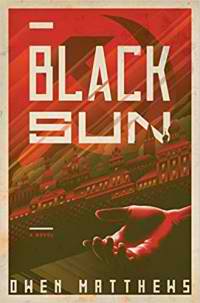Atmosphæra Incognita by Neal Stephenson
 Friday, July 26, 2019 at 8:02AM
Friday, July 26, 2019 at 8:02AM 
First published in 2013; published by Subterranean Press on July 31, 2019
Atmosphæra Incognita first appeared in Starship Century, a 2013 anthology devoted to interstellar travel edited by James and Gregory Benford. Neal Stephenson uses the term “Atmosphæra Incognita” to describe a place “that, hidden from earthlings’ view by thunderheads, stretches like an electrified shoal between us and the deep ocean of the cosmos.” It is, he imagines, a dangerous place to dwell.
The narrator of this novella is a commercial real estate agent who is tasked with finding property for her wealthy friend Carl. He wants to build a steel tower, 20 km high. Most of the story addresses the logistics of building a tower that reaches into the stratosphere. The story is reasonably interesting even to those of us who don’t have engineering degrees.
Stephenson gives the narrator the rudiments of a personality. Her description of Carl suggests that he might have more personality than she does, but this isn’t a character-driven story. The most dramatic moment concerns an atmospherically endangered human near the story’s end. Most of the story’s drama, however, resides in the creation of a seemingly impossible-to-build structure and the creative solutions that designers devise to keep the tower standing in the face of menacing winds and upward traveling lightning strikes known as superbolts.
I’m not an engineering geek, but I thought Atmosphæra Incognita was surprisingly interesting. That’s a tribute to Stephenson, who took a break from writing science fiction epics to pen this novella. It is now available to readers who don’t want to track down Starship Century.
RECOMMENDED



